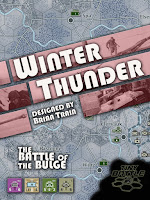Battle of Cape St. Vincent aka The Moonlight Battle
 |
| Battle off Cape St Vincent, 16 January 1780 by Francis Holman, (1780), depicts the Santo Domingo exploding. Admiral Rodney's flagship Sandwich is in the foreground. |
On this day, in 1780, British Admiral Sir George Rodney, with about 20 ships of the line, engaged a Spanish squadron of 11 battleships commanded by Don Juan de Lángara off the southwest coast of Portugal at Cape St. Vincent, in what has become known as "The Moonlight Battle". It was unusual for naval battles to take place at night during the great Age of Sail.
The Spanish having sided with the Americans in the spat between mama England and errant child America, made the squadron ripe for the picking. By the way, a ship of the line was a type of naval warship that was used in a naval tactic known as the line of battle, in which two columns of opposing warships would manoeuvre to bring the greatest weight of broadside firepower to bear. These engagements were invariably won by the heaviest ships carrying the most powerful guns.
 |
| HMS Hercule firing broadside in her fight against the frigate Poursuivante. |
Rodney was escorting a fleet of supply ships to Gibraltar with about 20 ships of the line when he encountered the Spanish squadron in the early afternoon on January 16. When Lángara saw the size of the British fleet, he made haste towards the safety of the port at Cadiz. Unfortunately, the Spanish ships were no match for the cooper-sheathed British ships. In a running battle that lasted from mid-afternoon until well after midnight, the British eventually captured four Spanish ships, including Lángara's flagship, and destroyed or grounded two others.
Rodney's decision to give chase, stay lee side of the Spanish ships (preventing them from making a straight run for the harbor), and their greater number of ships certainly were a large portion of the victory, but the barnacle-free cooper bottoms of the British ships played their part in the decisive British victory, allowing the British ships to outpace their Spanish counterparts.
And when the battle was done, Rodney continued on with his mission and successfully resupplied Gibraltar and Minorca before setting sail for the West Indies.
Bunkers
 |
| A photo of the rear entrance to the Führerbunker in the garden of the Reich Chancellery taken in July 1947. |
Today is also the day, in 1945, Adolf Hitler took to his underground bunker, an air-raid shelter located in the garden area of the Reich Chancellery, where he remained for 105 days until he committed suicide. Although the Chancellery buildings were leveled by the Soviets, some corridors of the bunker still exist, but are sealed off from the public.
 |
| A 3D model of New Reichs Chancellery with location of the bunker complex shown in red. |
The bunker consisted of two separate sections connected by a stairway, the Vorbunker ("forward bunker"; which was the upper section of the elaborate complex) and the lower Führerbunker. The Führerbunker could be sealed off from the Vorbunker by a bulkhead door. The Vorbunker was completed in 1936 and the Führerbunker which was about 8 ft. lower, was completed in 1944. Besides being deeper below ground, the Führerbunker had significantly more reinforcement, with a concrete roof that was almost 10 feet thick.
 |
| A 3D model of Führerbunker (left) and Vorbunker (right), which is the upper section of the bunker complex. |
Speaking of WWII, check out Winter Thunder, our Battle of the Bulge game, from designer Brian Train and artist John Cooper.


